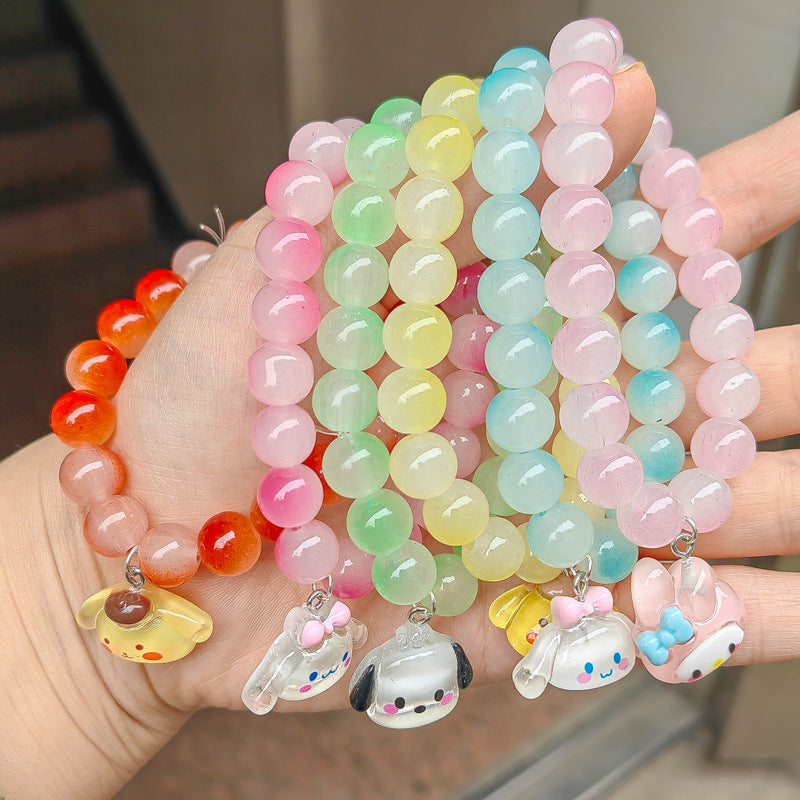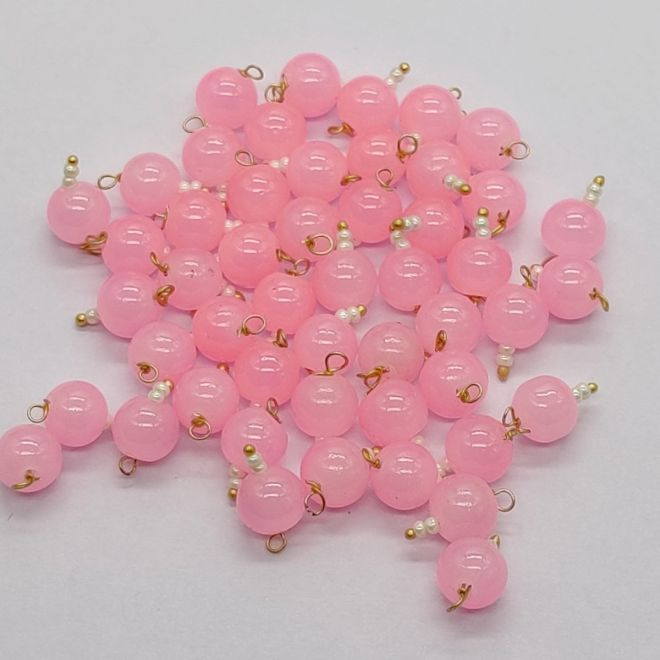Glass beads have captivated the hearts of artisans and collectors for centuries. These small but intricate pieces are not merely decorative; they also possess deep cultural and historical significance. They come in various colors, sizes, and shapes, making them versatile for various applications, from jewelry-making to art installations. This article explores the origins, crafting techniques, and modern uses of glass beads. By delving into their rich tapestry, we can appreciate the artistry involved in creating these enchanting objects. Furthermore, understanding their historical context adds depth to our appreciation of glass beads.
Understanding Glass Beads: Historical Perspectives
The Origins of Glass Beads
The history of glass beads traces back to ancient civilizations. Archaeologists have found evidence of these beautiful artifacts in different parts of the world. Interestingly, glass-making techniques date back to Mesopotamia around 2500 BC. At that time, bead-making was labor-intensive and required immense skill and artistry. Additionally, beads served not only as ornaments but also as currency and trade items. For various societies, glass beads became symbols of wealth, status, and spirituality.
The ancient Egyptians are particularly renowned for their glass beads. They would carefully craft these beads for use in jewelry and burial items. Egyptians often placed glass beads in the tombs of the deceased, believing in their protective qualities. Furthermore, glass beads established trade routes across continents. This interconnectedness points to how cultural exchanges shaped the development of glass bead-making techniques across regions.
Cultural Significance
Across cultures, glass beads have held various meanings and functions. For Native Americans, glass beads often replaced traditional materials like shells and stones in adornments. Many tribes decorated garments, baskets, and ceremonies using these beads, adding vibrant colors to their cultural expressions. In Africa, glass beads play vital roles in rituals, representing lineage and identity. The intricate patterns and arrangements of beads tell stories about ancestry and heritage.
The cultural significance of glass beads continues in contemporary arts and crafts. Many artists incorporate them into their works to honor traditional methods while forging new narratives. As a result, glass beads unite artisans and collectors from different backgrounds, creating a shared appreciation for their beauty. This blending of tradition and modernity enriches the dialogue surrounding glass beads, ensuring their place in both historical and contemporary contexts.

Crafting Glass Beads: Techniques and Methods
Traditional Techniques
Creating glass beads involves various techniques that have been passed down through generations. Traditional methods often include the use of a flame, glass rods, and a mandrel. Artisans carefully melt the glass rods in a flame until they become malleable. Afterward, they wrap the softened glass around the mandrel, shaping it into a bead. This delicate process requires immense skill to achieve the desired shape and color.
Moreover, colored glass is often layered or combined to create intricate designs. Some artisans use a technique called millefiori, which means “a thousand flowers” in Italian. This method involves fusing multiple colors to produce intricate patterns. Consequently, the finished beads beautifully depict vibrant scenes, nature, or abstract designs. These traditional techniques reflect the artist’s creativity and often require years of practice to master. The patience and attention to detail involved in bead-making add to each piece’s uniqueness.
Modern Techniques
Aside from traditional methods, contemporary glass bead-making has expanded due to technological advancements. Modern artisans often utilize kiln-forming and glass fusion techniques. These methods allow for more complex designs and shapes that were previously difficult to achieve. Kiln-forming involves heating glass in a kiln to shape it into specific forms. This technique supports higher production volumes, catering to commercial demand while maintaining artistic integrity.
Another modern approach is the use of dichroic glass. This material reflects different colors depending on the angle of light. As a result, beads made from dichroic glass offer stunning visual effects, catching the eye in unique ways. blending traditional and modern techniques bridges the gap between historical practices and contemporary aesthetics.
Ultimately, both traditional and modern methods contribute significantly to glass bead artistry. Each technique has strengths and weaknesses, allowing artisans to choose approaches that best suit their visions. As a result, the glass bead landscape remains vibrant and ever-evolving.
Applications of Glass Beads: Art and Beyond
Jewelry Making
One of the most popular applications of glass beads is in jewelry making. These beads offer an incredible variety of colors, shapes, and sizes. Artisans can create stunning necklaces, bracelets, and earrings, capturing attention with their unique designs. Additionally, many artists dedicate themselves to creating custom pieces for clients, allowing personal expression through jewelry. This customization adds sentimental value and creates a one-of-a-kind accessory.
Moreover, glass beads are often combined with other materials, such as metals or gemstones. These combinations elevate the overall aesthetic of a piece and provide contrast. For instance, pairing glass beads with silver or gold findings creates a luxurious design that appeals to various tastes. Furthermore, the lightweight nature of glass beads makes them comfortable to wear. This accessibility contributes to their popularity among various fashion enthusiasts and jewelry collectors.
Artistic Installations
Beyond jewelry making, glass beads are utilized in artistic installations. Artists often incorporate them into larger pieces, creating visually striking compositions. These installations can be found in galleries, public spaces, and private collections. Glass beads add depth, color, and texture to artworks, attracting viewers with their shimmering surfaces. Many artists explore themes such as fragility or transformation through glass bead installations, prompting thoughtful engagement from the audience.
Additionally, these installations can serve social or political purposes. Artists often use glass beads to comment on cultural issues, including consumerism and environmental impact. By merging functionality and artistic expression, glass beads create a platform for dialogues that transcend traditional art forms. Ultimately, these pieces invite viewers to re-examine their relationships with everyday objects or societal constructs.

Collecting Glass Beads: A Passionate Pursuit
The Joy of Collecting
Collecting glass beads can be a fulfilling and rewarding hobby. Enthusiasts often seek rare or historical pieces to add to their collections. The joy of discovery drives many collectors to scour antique shops, estate sales, and online marketplaces. Each bead has its own history, evoking curiosity and passion among collectors. This pursuit fosters a community of like-minded individuals who share knowledge and appreciation for bead artistry.
Moreover, collectors often enjoy learning about the cultural significance of different beads. Many enthusiasts delve into the backgrounds of various bead types, tracing their origins and usages. This research can enhance understanding and deepen appreciation for the artistry involved in bead-making. Often, collectors become ambassadors of glass bead culture, sharing their knowledge with others. This exchange enriches the entire community, creating a network of individuals bound by a shared love for these beautiful artifacts.
Marketplace Dynamics
The marketplace for glass beads has expanded, especially with the rise of artisanal craftsmanship. Various online platforms allow sellers to showcase their work. This accessibility has opened new avenues for aspiring artisans while making it easier for collectors to find unique pieces. The interplay between demand and supply shapes pricing structures and influences trends within the collecting community.
Furthermore, attending bead shows and fairs presents opportunities for networking and education. These events often feature workshops, allowing collectors to learn more about techniques and materials. Additionally, they provide a venue for artisans to find inspiration and connect with potential buyers. The vibrant atmosphere at these gatherings fosters a sense of camaraderie, encouraging collaboration and innovation within the glass bead community.
Sustainability and Glass Beads: A Modern Challenge
Environmental Impact
The glass industry faces significant sustainability challenges, including raw material extraction and energy-intensive manufacturing processes. While glass is theoretically recyclable, the realities often differ in practice. Consequently, the environmental footprint of glass bead production remains a concern. Many artisans are seeking eco-friendly practices to lessen the negative impact on the environment.
One innovative approach involves using recycled glass. Artisans creatively transform discarded bottles and window panes into new glass beads, giving them a second life. This method not only reduces waste but also creates unique pieces with character. As a result, eco-friendly glass beads are emerging in the marketplace, appealing to environmentally conscious consumers.
Promoting Sustainable Practices
Artisans can engage in sustainable practices without sacrificing creativity or quality. For instance, they can source materials from suppliers prioritizing ethical and eco-friendly practices. They may also implement energy-efficient techniques in their workshops, reducing their overall carbon footprint.
Moreover, educational initiatives focused on sustainability are becoming more prevalent. Many organizations encourage artisans to adopt responsible practices while promoting awareness among consumers. These initiatives help create a more sustainable glass bead community that can thrive for generations. This commitment to sustainability helps preserve the craft while ensuring future artisans can continue to create beautiful works of art.

Conclusion: The Timeless Charm of Glass Beads
In conclusion, glass beads are more than just decorative objects; they represent a rich history of artistry and culture. From their ancient origins to modern applications, these small creations capture the imagination and inspire creativity. Through traditional and contemporary techniques, artisans continue to push the boundaries of bead-making, producing unique and stunning works of art. Furthermore, the act of collecting glass beads fosters community and knowledge-sharing among enthusiasts and artisans alike. This enduring journey transcends time and space, connecting individuals across cultures and generations.
As we navigate challenges such as sustainability, it is crucial to honor the legacy of glass beads while promoting responsible practices. By embracing innovation and education, we can contribute to a more sustainable future for glass bead artistry. The timeless charm of glass beads will never fade, ensuring their place in artisanal craftsmanship for years to come. Therefore, whether through jewelry making, artistic installations, or passionate collecting, glass beads will always inspire and unite us in our appreciation for their beauty and significance.
